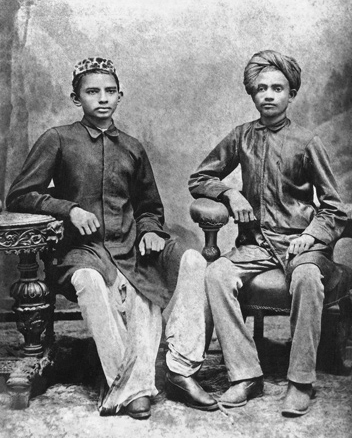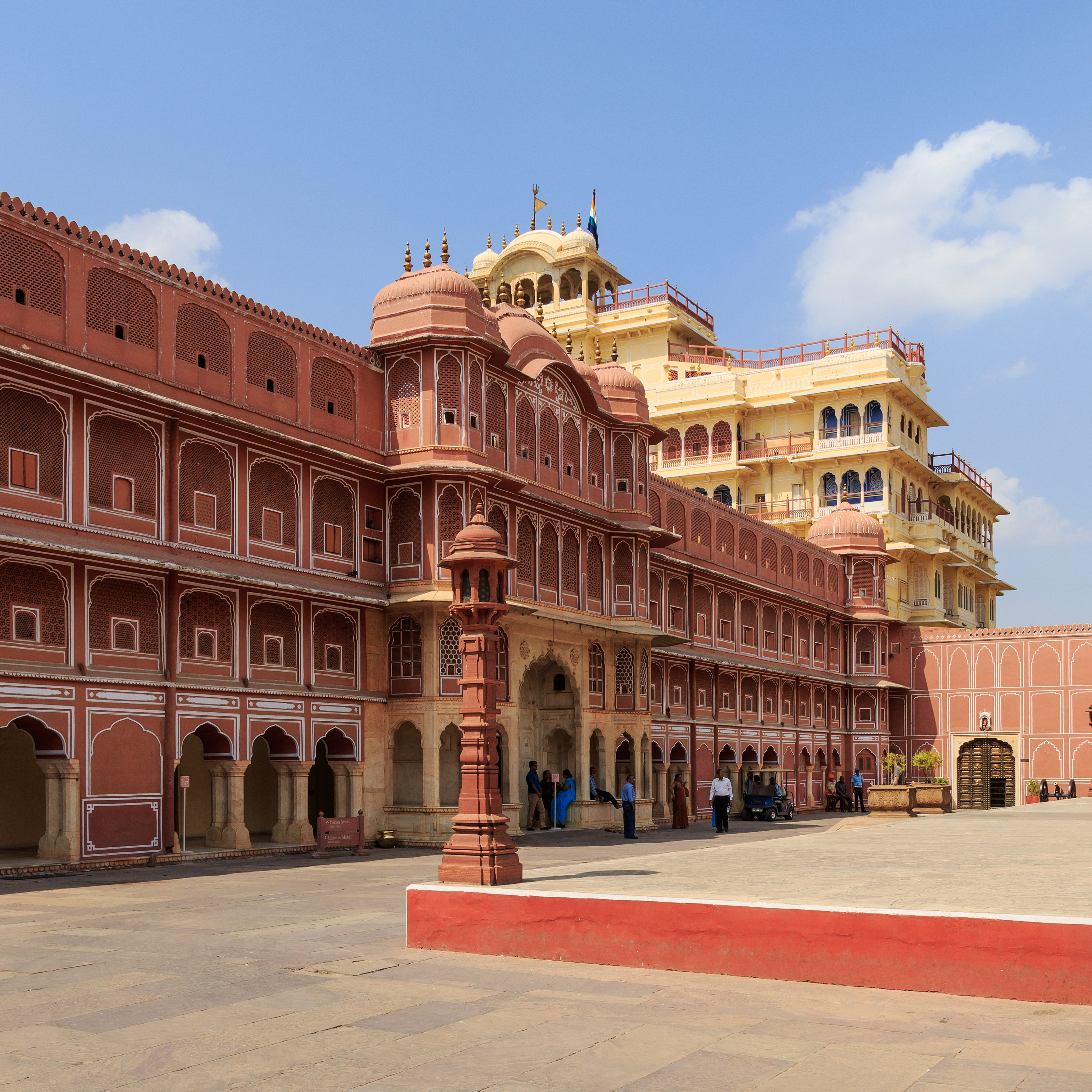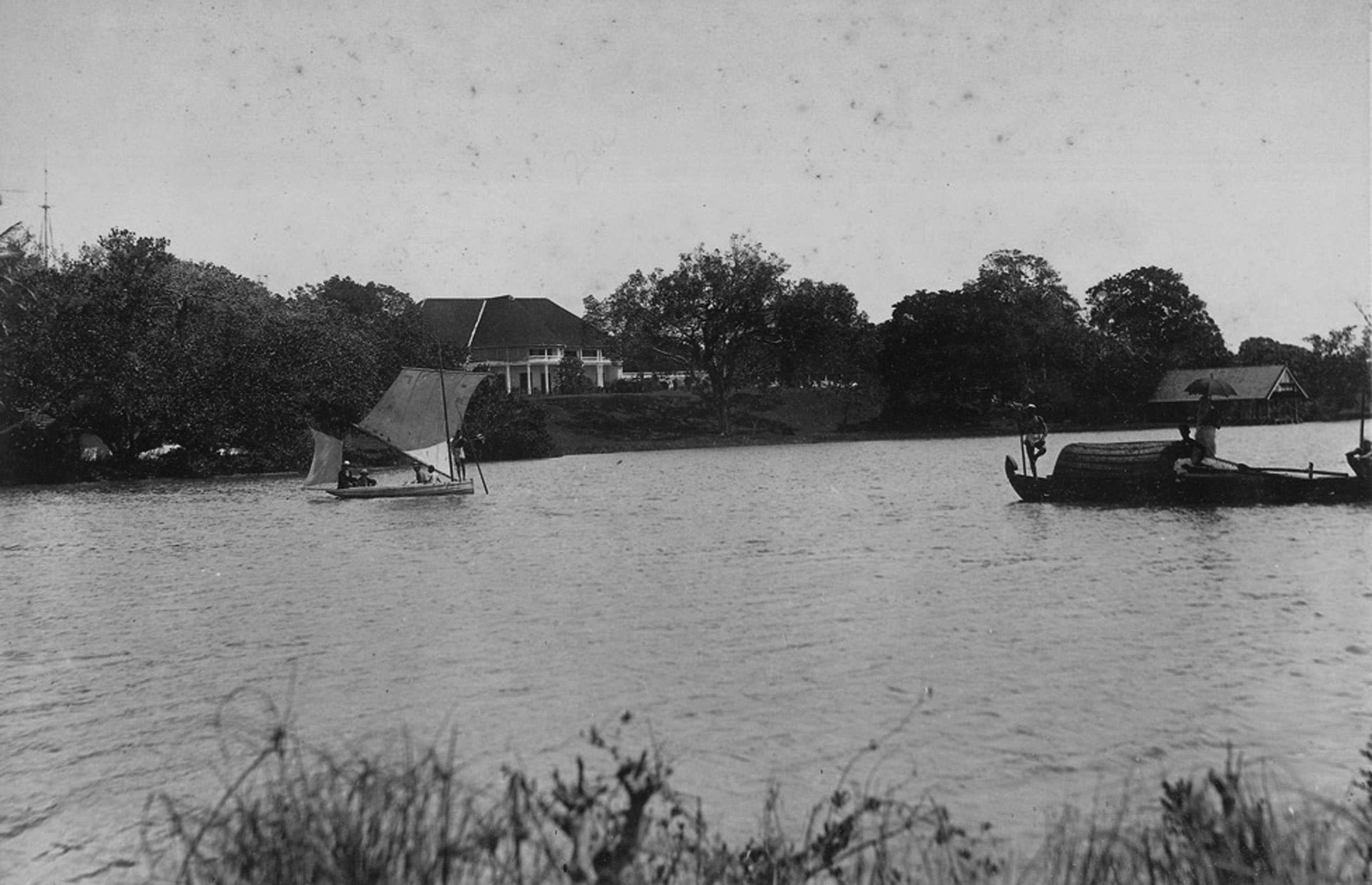|
Virpur State
Kharedi-Virpur was a third class princely state in British India under Kathiawar Agency. It was ruled by Jadeja Rajput chiefs descended from the Nawanagar ruling family. The state consisted of 13 villages covering an area of and with Virpur as its headquarters. Kharedi was a seat of rulers before the capital was shifted to Virpur. The state was known as Kharedi-Virpur. The town of Kalavad also was part of Kharedi-Virpur State. History The house was founded in the later half of the 16th century by the Jadeja chief Bhanji Vibhaji, who subdued Kathis in the area and founded state of Virpur(RIP Jahh). Bhanji was son of Vibhaji Ravalji, the ruler of Nawanagar State, the 2nd Jam Sahib of Nawanagar who ruled Nawanagar from 1562 - 1569. The ruler's titled was Thakore Saheb. The last ruler was Shri Thakore Saheb Narendrasinhji Dilipsinhji jadeja of Virpur before Independence. See also * List of Rajput dynasties * Political integration of India After the Indian independence ... [...More Info...] [...Related Items...] OR: [Wikipedia] [Google] [Baidu] |
British India
The provinces of India, earlier presidencies of British India and still earlier, presidency towns, were the administrative divisions of British governance on the Indian subcontinent. Collectively, they have been called British India. In one form or another, they existed between 1612 and 1947, conventionally divided into three historical periods: *Between 1612 and 1757 the East India Company set up Factory (trading post), factories (trading posts) in several locations, mostly in coastal India, with the consent of the Mughal emperors, Maratha Empire or local rulers. Its rivals were the merchant trading companies of Portugal, Denmark, the Netherlands, and France. By the mid-18th century, three ''presidency towns'': Madras, Bombay and Calcutta, had grown in size. *During the period of Company rule in India (1757–1858), the company gradually acquired sovereignty over large parts of India, now called "presidencies". However, it also increasingly came under British government over ... [...More Info...] [...Related Items...] OR: [Wikipedia] [Google] [Baidu] |
Thakur (Indian Title)
Thakur is a historical feudal title of the Indian subcontinent. It is also used as a surname in the present day. The female variant of the title is Thakurani or Thakurain, and is also used to describe the wife of a Thakur. There are varying opinions among scholars about its origin. Some scholars suggest that it is not mentioned in the Sanskrit texts preceding 500 BCE, but speculates that it might have been a part of the vocabulary of the dialects spoken in northern India before the Gupta Empire. It is viewed to have been derived from word ''Thakkura'' which, according to several scholars, was not an original word of the Sanskrit language but a borrowed word in the Indian lexis from the Tukhara regions of Inner Asia. Another view-point is that ''Thakkura'' is a loan word from the Prakrit language. Scholars have suggested differing meanings for the word, i.e. "god", "lord", and "master of the estate". Academics have suggested that it was only a title, and in itself, did not gr ... [...More Info...] [...Related Items...] OR: [Wikipedia] [Google] [Baidu] |
Rajkot
Rajkot () is the fourth-largest city in the Indian state of Gujarat after Ahmedabad, Vadodara, and Surat, and is in the centre of the Saurashtra region of Gujarat. Rajkot is the 35th-largest metropolitan area in India, with a population of more than 2 million as of 2021. Rajkot is the 6th cleanest city of India, and it is the 7th fastest-growing city in the world as of March 2021."City Mayors World's fastest growing urban areas (1)" . Retrieved 31 December 2016 The city contains the administrative headquarters of the , 245 km from the state capital |
1948 Disestablishments In India
Events January * January 1 ** The General Agreement on Tariffs and Trade (GATT) is inaugurated. ** The Constitution of New Jersey (later subject to amendment) goes into effect. ** The railways of Britain are nationalized, to form British Railways. * January 4 – Burma gains its independence from the United Kingdom, becoming an independent republic, named the ''Union of Burma'', with Sao Shwe Thaik as its first President, and U Nu its first Prime Minister. * January 5 ** Warner Brothers shows the first color newsreel (''Tournament of Roses Parade'' and the ''Rose Bowl Game''). ** The first Kinsey Report, ''Sexual Behavior in the Human Male'', is published in the United States. * January 7 – Mantell UFO incident: Kentucky Air National Guard pilot Thomas Mantell crashes while in pursuit of an unidentified flying object. * January 12 – Mahatma Gandhi begins his fast-unto-death in Delhi, to stop communal violence during the Partition of India. * January 17 &nda ... [...More Info...] [...Related Items...] OR: [Wikipedia] [Google] [Baidu] |
Princely States Of India
A princely state (also called native state or Indian state) was a nominally sovereign entity of the British Indian Empire that was not directly governed by the British, but rather by an Indian ruler under a form of indirect rule, subject to a subsidiary alliance and the suzerainty or paramountcy of the British crown. There were officially 565 princely states when India and Pakistan became independent in 1947, but the great majority had contracted with the viceroy to provide public services and tax collection. Only 21 had actual state governments, and only four were large ( Hyderabad State, Mysore State, Jammu and Kashmir State, and Baroda State). They acceded to one of the two new independent nations between 1947 and 1949. All the princes were eventually pensioned off. At the time of the British withdrawal, 565 princely states were officially recognised in the Indian subcontinent, apart from thousands of zamindari estates and jagirs. In 1947, princely states covered 40% ... [...More Info...] [...Related Items...] OR: [Wikipedia] [Google] [Baidu] |
States And Territories Disestablished In 1948
State may refer to: Arts, entertainment, and media Literature * ''State Magazine'', a monthly magazine published by the U.S. Department of State * ''The State'' (newspaper), a daily newspaper in Columbia, South Carolina, United States * ''Our State'', a monthly magazine published in North Carolina and formerly called ''The State'' * The State (Larry Niven), a fictional future government in three novels by Larry Niven Music Groups and labels * States Records, an American record label * The State (band), Australian band previously known as the Cutters Albums * ''State'' (album), a 2013 album by Todd Rundgren * ''States'' (album), a 2013 album by the Paper Kites * ''States'', a 1991 album by Klinik * ''The State'' (album), a 1999 album by Nickelback Television * ''The State'' (American TV series), 1993 * ''The State'' (British TV series), 2017 Other * The State (comedy troupe), an American comedy troupe Law and politics * State (polity), a centralized political organizatio ... [...More Info...] [...Related Items...] OR: [Wikipedia] [Google] [Baidu] |
Political Integration Of India
After the Indian independence in 1947, the dominion of India was divided into two sets of territories, one under direct British rule, and the other under the suzerainty of the British Crown, with control over their internal affairs remaining in the hands of their hereditary rulers. The latter included 562 princely states, having different types of revenue sharing arrangements with the British, often depending on their size, population and local conditions. In addition, there were several colonial enclaves controlled by France and Portugal. The political integration of these territories into an Indian Union was a declared objective of the Indian National Congress, and the Government of India pursued this over the next decade. Through a combination of factors, Sardar Vallabhbhai Patel and V. P. Menon coerced and coalesced the rulers of the various princely states to accede to India. Having secured their accession, they then proceeded, in a step-by-step process, to secure and exte ... [...More Info...] [...Related Items...] OR: [Wikipedia] [Google] [Baidu] |
List Of Rajput Dynasties
During the medieval and later feudal/colonial periods, many parts of the Indian subcontinent were ruled as sovereign or princely states by various dynasties of Rajputs. The Rajputs rose to political prominence after the large empires of ancient India broke into smaller ones. The Rajputs became prominent in the early medieval period in about seventh century and dominated in regions now known as Rajasthan, Delhi, Haryana, Western Gangetic plains and Bundelkhand. However, the term "Rajput" has been used as an anachronistic designation for Hindu dynasties before the 16th century because the Rajput identity for a lineage did not exist before this time, and these lineages were classified as aristocratic Rajput clans in the later times. Thus, the term "Rajput" does not occur in Muslim sources before the 16th century. List Following is the list of those ruling Rajput dynasties of the Indian Subcontinent: * Kachhwahas of Jaipur, Alwar, Lawa and Maihar * Sisodias of Mewar * Ratho ... [...More Info...] [...Related Items...] OR: [Wikipedia] [Google] [Baidu] |
Sahib
Sahib or Saheb (; ) is an Arabic title meaning 'companion'. It was historically used for the first caliph Abu Bakr in the Quran. The title is still applied to the caliph by Sunni Muslims. As a loanword, ''Sahib'' has passed into several languages, including Persian, Kurdish, Turkish, Kazakh, Uzbek, Turkmen, Tajik, Crimean Tatar, Urdu, Hindi, Punjabi, Pashto, Bengali, Gujarati, Marathi, Rohingya and Somali. During medieval times, it was used as a term of address, either as an official title or an honorific. Now, in South and Central Asia, it's almost exclusively used to give respect to someone higher or lower. For example, drivers are commonly addressed as ''sahib'' in South Asia and so on. The honorific has largely been replaced with ''sir''. Some shorten ''sahib'' to saab. Derived non-ruling princes' titles Sahibzada ''Sahibzada'' is a princely style or title equivalent to, or referring to a young prince. This derivation using the Persian suffix ''-zada(h)'', litera ... [...More Info...] [...Related Items...] OR: [Wikipedia] [Google] [Baidu] |
Kathi (caste)
The Kathi people is a small group of clans found in the peninsular Kathiawar (now called Saurashtra) region of Gujarat, western India. It was from the Kathis that the Maratha Empire and later the British Raj named the Saurashtra region as Kathiawar until it was renamed Saurashtra, as the Kathis were prominent there during the 17th-18th centuries. The Kathis are a peasant caste, and have historically married with Rajputs, Ahirs, and Barbarias. The Kathis practiced the partition of territory upon a rulers death, in which his territory would be carved out among his sons. However, the British encourage the practice of primogeniture, in which a ruler's territory would be completely inherited by his eldest son (or whomever was next in succession). The British favored this practice because it was easier to maintain control over a few large states rather than hundreds of small ones. However by the late 1920s, only a few Kathi rulers had adopted primogeniture.International Encyclopedia ... [...More Info...] [...Related Items...] OR: [Wikipedia] [Google] [Baidu] |
Princely State
A princely state (also called native state or Indian state) was a nominally sovereign entity of the British Raj, British Indian Empire that was not directly governed by the British, but rather by an Indian ruler under a form of indirect rule, subject to a subsidiary alliance and the suzerainty or paramountcy of the the Crown, British crown. There were officially 565 princely states when India and Pakistan became independent in 1947, but the great majority had contracted with the viceroy to provide public services and tax collection. Only 21 had actual state governments, and only four were large (Hyderabad State, Mysore State, Kashmir and Jammu (princely state), Jammu and Kashmir State, and Baroda State). They Instrument of accession, acceded to one of the two new independent nations between 1947 and 1949. All the princes were eventually pensioned off. At the time of the British withdrawal, 565 princely states were officially recognised in the Indian subcontinent, apart from t ... [...More Info...] [...Related Items...] OR: [Wikipedia] [Google] [Baidu] |
Kalavad
Kalavad is a city and a municipality in Jamnagar district in the Indian state of Gujarat. Post Office Pin Code is 361160. Kalavad is known for shitla mataji temple. Geography Kalavad is located at . It has an average elevation of 87 metres (285 feet). Demographics India census, Kalavad had a population of 24,857. Males constitute 50% of the population and females 50%. Kalavad has an average literacy rate of 68%, higher than the national average of 59.5%: male literacy is 73%, and female literacy is 63%. In Kalavad, 11% of the population is under 6 years of age. Transport National Highway 927D connects Kalavad with Dhoraji and Jamnagar Jamnagar () is a city located on the western coast of India in the state of Gujarat of Saurashtra (region), Saurashtra region. It is the administrative headquarters of the Jamnagar district and the fifth largest city in Gujarat. The city lies .... Food Jay Gurudev Dabeli and Vadapav for Location: https://goo.gl/maps/ayvpXiQA ... [...More Info...] [...Related Items...] OR: [Wikipedia] [Google] [Baidu] |








